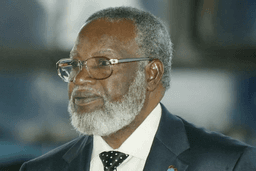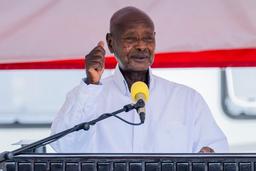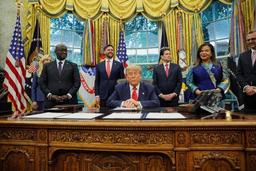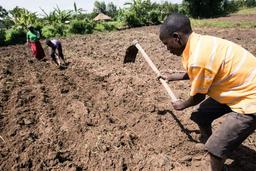Zimbabwe
Zimbabwe is a landlocked country in southern Africa, bordered by Zambia, Mozambique, South Africa, and Botswana. It's known for its diverse geography, including high plateaus and mountains in the east. The country gained independence in 1980 after a period of colonial rule and white minority rule. Zimbabwe has a mixed economy and is a member of various regional organizations like COMESA and SADC.


16.3 Million (2023)

Southern Africa

390,757 sq km

UTC+02:00

English

Zimbabwean dollar

Christianity and Islam

President Emmerson Dambudzo Mnangagwa
Brief
Zimbabwe is a landlocked country in southern Africa, bordered by Zambia, Mozambique, South Africa, and Botswana. Its capital is Harare, and it has a population of about 16.6 million, mainly from the Shona and Ndebele ethnic groups. English is the official language, with Shona and Ndebele also widely spoken. The country boasts a rich cultural heritage and history, including the Great Zimbabwe ruins, evidence of a powerful pre-colonial civilization. After enduring British colonialism and a period of white-minority rule, Zimbabwe gained independence in 1980, marking a new era of majority governance.
Zimbabwe's economy relies heavily on its abundant natural resources, including gold, diamonds, and platinum, as well as agriculture and tourism, with Victoria Falls as a major attraction. Despite facing significant economic challenges such as hyperinflation and structural issues, the country is working towards recovery and sustainable growth. Politically, Zimbabwe operates as a multi-party democracy with a president elected by absolute majority for a six-year term. Its legal system is based on Roman-Dutch law, influenced by South African jurisprudence, and the legislature consists of a National Assembly and a Senate.
Photos and Videos
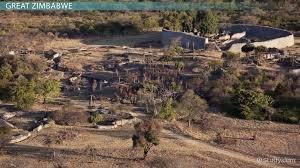



National anthem
Cultural Life
Cultural milieu
The cultural milieu of Sierra Leone is a rich blend of ethnic diversity, traditional values, and post-colonial influences. The country is home to over 16 ethnic groups, with the Temne and Mende being the largest. Each group has its own language, customs, and social structures, yet there’s a strong sense of national identity shaped by shared experiences such as colonialism, civil war, and post-war recovery.
Traditional music, dance, and storytelling play central roles in community life, often used in ceremonies, education, and social bonding. Poro and Bondo secret societies, which guide socialization and rites of passage, remain influential in rural areas. Religious harmony is notable: Islam and Christianity coexist peacefully, often within the same families.
Urban areas like Freetown reflect a more globalized culture influenced by British colonial heritage, modern media, and diasporic connections, while rural life remains deeply rooted in tradition. Food, clothing, and festivals—such as the National Reunification Festival—reflect this cultural fusion, embodying both resilience and creativity.
Daily life and social customs
Daily life in Sierra Leone is centered around family, community, and tradition. People live in extended families and value respect for elders and strong social bonds. In rural areas, daily routines involve farming, fishing, and trading, while urban life includes office work and education. Traditional clothing and communal meals are common, and both Islam and Christianity shape religious and cultural practices. Social events like weddings and funerals are major communal gatherings. Music, dance, and football are popular pastimes, and despite challenges, Sierra Leoneans maintain a strong sense of hospitality and resilience.
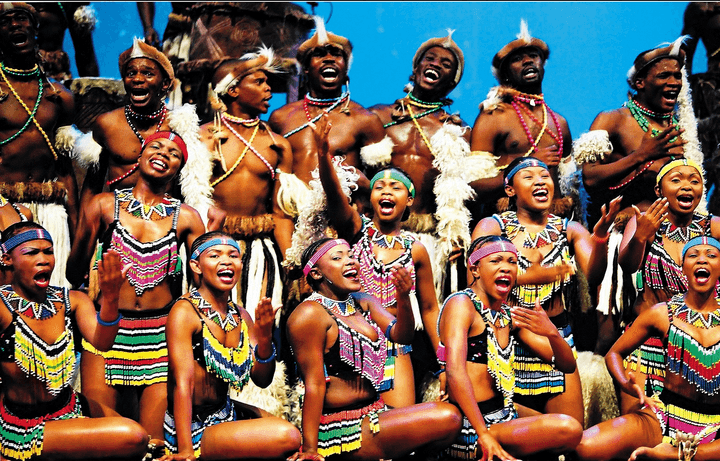


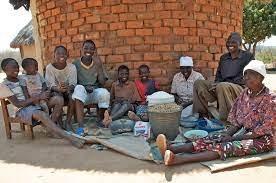

Cuisine
Zimbabwean cuisine is rooted in traditional ingredients and communal eating practices, with sadza being the staple food. Sadza is a thick maize (cornmeal) porridge eaten daily, often served with relishes like meat (beef, chicken, or goat), vegetables (collard greens, pumpkin leaves), or peanut-based sauces. Sadza is typically eaten with the hands and is central to most meals.
Other common dishes include mapopo (papaya candy), mopane worms (edible caterpillars), roasted maize, and kapenta (dried small fish). Peanuts, beans, sweet potatoes, and millet are also widely used. Street food and local snacks such as fat cook (fried dough) and maheu (a fermented maize drink) are popular, especially in urban areas.
Zimbabwean cuisine reflects its agricultural lifestyle and cultural diversity, blending indigenous Shona and Ndebele traditions with colonial influences and modern tastes. Meals are not just about food—they’re key to social gatherings, ceremonies, and family life.


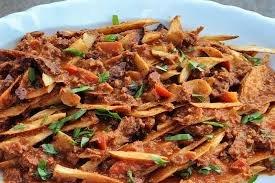

Music
Zimbabwean music is vibrant, deeply rooted in tradition, and plays a central role in daily life, ceremonies, and storytelling. The most iconic traditional instrument is the mbira (thumb piano), used for spiritual rituals, celebrations, and ancestral communication. Other traditional instruments include hosho (shakers), ngoma (drums), and marimba (wooden xylophone).
Zimbabwe is also known for its chimurenga music, popularized by Thomas Mapfumo, which blends traditional rhythms with modern electric instruments and politically conscious lyrics. Modern genres like sungura, gospel, Afro-jazz, dancehall, and Zimdancehall are widely popular, especially among the youth. Artists like Oliver Mtukudzi and Ammara Brown have gained international recognition.
Music in Zimbabwe serves both social and spiritual purposes—accompanying weddings, funerals, political rallies, and religious services—making it a powerful form of cultural expression and unity.

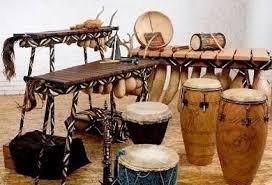


Zimdancehall
Afro-jazz
sungura
Gospel
The arts
The arts in Zimbabwe are rich, diverse, and deeply connected to the country’s cultural identity and history. Traditional art forms include stone sculpture, especially Shona stone carving, which has gained international acclaim for its spiritual and symbolic depth. Artists often use local stones like serpentine or springstone to create pieces reflecting ancestry, nature, and daily life.
Textiles, pottery, basketry, and beadwork are also significant, especially among rural communities, often blending function with artistic beauty. In urban areas, painting, printmaking, and contemporary sculpture thrive, with galleries and exhibitions in Harare and Bulawayo showcasing modern Zimbabwean creativity.
Performing arts—such as music, dance, and theatre—are vibrant and widely practiced, often telling stories of resistance, identity, and social change. Traditional dances like Jerusarema and Muchongoyo are performed during festivals and ceremonies. Zimbabwe’s arts scene continues to grow, supported by cultural institutions, festivals, and a strong tradition of storytelling passed through generations.
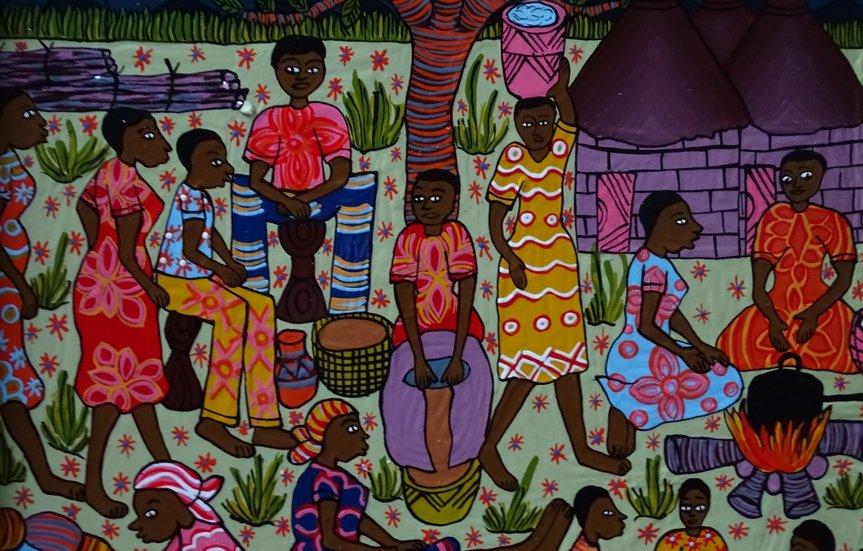
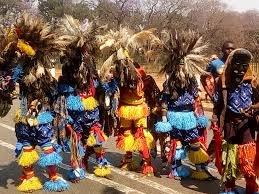


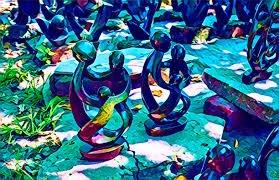
People
Ethnic groups
Zimbabwe is home to several ethnic groups, each with distinct languages, cultures, and traditions. The two largest are the Shona and the Ndebele: The Shona make up about 70% of the population and are divided into several subgroups. They primarily speak Shona languages and are known for their rich traditions in sculpture, music (especially mbira), and agriculture. The Ndebele represent about 20% of the population. They speak isiNdebele, a language related to Zulu, and have a strong warrior history. Their culture is notable for vibrant beadwork, dance, and traditional regalia.
Other smaller groups include the Tonga, Venda, Kalanga, and Sotho, each contributing unique customs and languages to Zimbabwe’s cultural mosaic.
Despite ethnic diversity, Zimbabweans share a strong national identity shaped by history, language, and collective experiences.
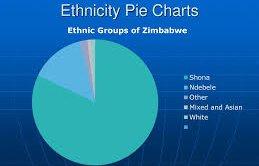




Religion
Religion plays a central role in Zimbabwean society, with the majority of the population identifying as Christian. About 80–85% of Zimbabweans are Christians, including denominations like Roman Catholic, Anglican, Methodist, Pentecostal, and Evangelical churches. Many combine Christianity with traditional African beliefs, such as ancestral worship and spirit mediums.
A significant portion of the population also practices indigenous religions, which emphasize connection with ancestors, nature, and spiritual healing, often led by traditional healers (n’angas). These practices are especially strong in rural areas and are closely tied to cultural identity.
Islam, Hinduism, and Baháʼí Faith are practiced by small communities, mainly in urban centers, especially among people of South Asian or Mozambican descent.
Religion in Zimbabwe influences daily life, social customs, moral values, and major life events like birth, marriage, and death, often blending modern faiths with long-standing traditional practices.

Settlement patterns
Zimbabwe's population is mostly rural, with many people living in villages and small farming communities. These rural areas are typically organized around family homesteads and rely on subsistence agriculture. Urban areas like Harare, Bulawayo, and Mutare are growing quickly due to migration for jobs and better services, but also face challenges like overcrowding and informal housing. Colonial history shaped land distribution, and while efforts have been made to reform this, rural-urban differences remain strong. Overall, Zimbabwe has a primarily rural population with increasing urbanization.
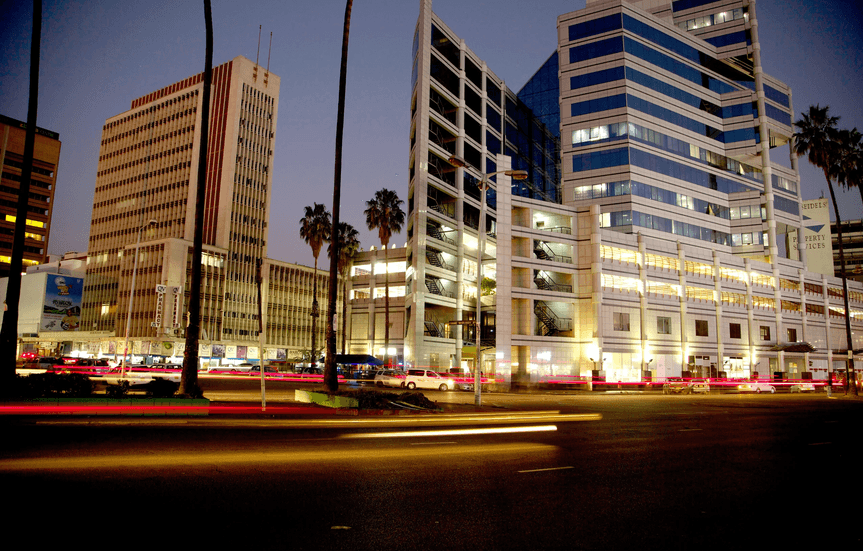
Urban settlement
Urban settlements are growing rapidly, especially in cities like Harare (the capital), Bulawayo, Mutare, and Gweru. These cities are hubs for government, industry, and commerce, attracting people in search of jobs, education, and better services. Urban areas are more modern, with formal housing, but also face challenges like overcrowding and informal (slum) settlements.
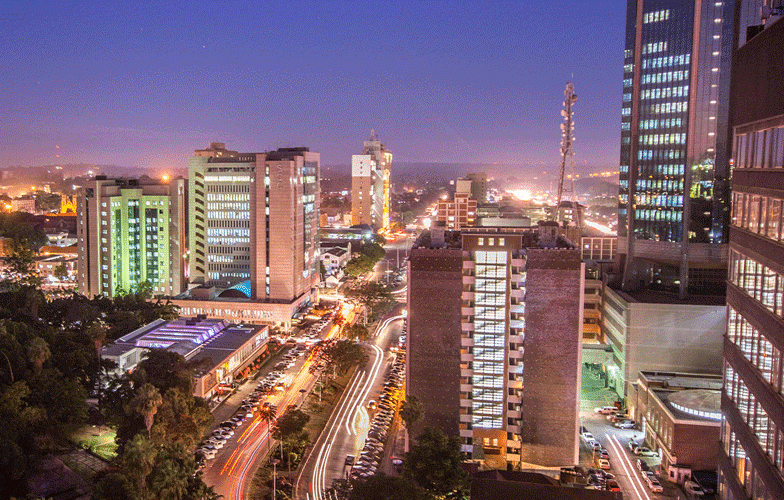
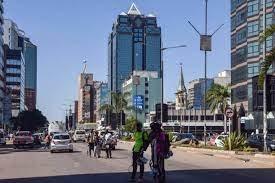



Rural settlements
Rural settlements dominate, with about two-thirds of the population living in villages or dispersed homesteads. These are often located near water sources and farmland, and consist of traditional hut compounds surrounded by fields. Rural life centers around subsistence farming, community ties, and indigenous customs.
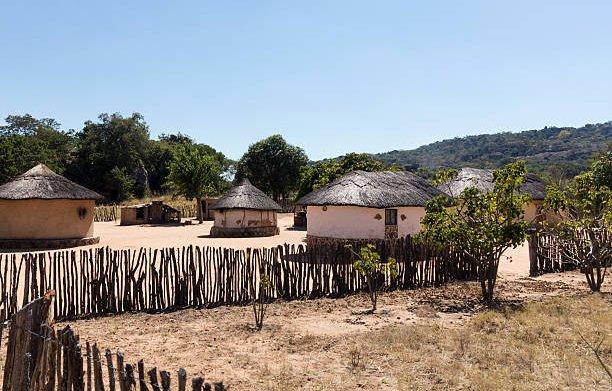
Demographic Trends
Zimbabwe has a fast-growing, youthful population of about 17 million (2025), with a median age of 18.1 years and over 40% under age 15. Although fertility rates are gradually declining—from over 6 children per woman in the 1980s to about 3.9 today—they remain higher in rural areas. Life expectancy has improved significantly, reaching around 62 years, up from the mid-40s during the HIV/AIDS crisis.
Around 67% of Zimbabweans live in rural areas, though urbanization is steadily rising. Many young people are emigrating in search of jobs, which affects population growth and labor force dynamics. Looking ahead, Zimbabwe’s population is projected to exceed 21 million by 2042, offering a potential demographic dividend if investments in jobs, education, and health are made.
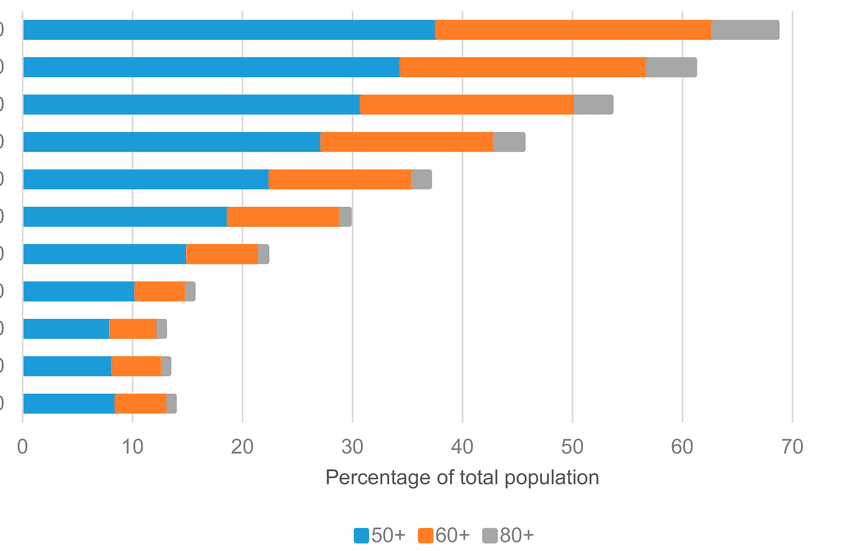
Touristic Cities
Harare
Harare is a bustling city with a rich cultural scene, featuring museums, galleries, and bustling markets like the Avondale Flea Market. It's also known for its green spaces, restaurants, and vibrant nightlife.
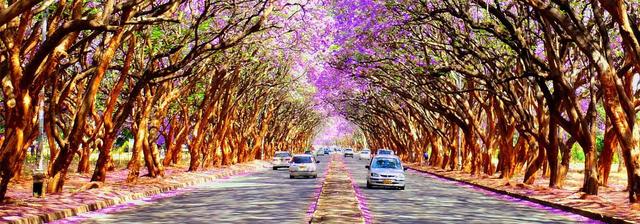
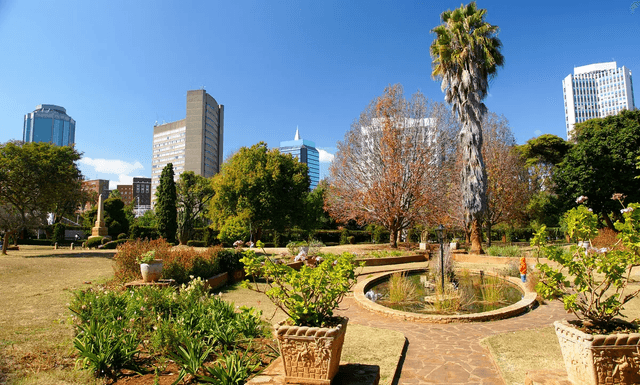

Bulawayo
Known as the "City of Kings", Bulawayo is a major commercial, industrial, and tourist center. It offers a laid-back atmosphere, well-preserved colonial architecture, and serves as a gateway to nearby attractions like Matobo National Park. Bulawayo is a city in southwest Zimbabwe. It’s a gateway to Matobo National Park, home to the Matobo Hills rock formations and Stone Age cave art. Park wildlife includes rhinos and black eagles. Nearby, Tshabalala Game Sanctuary has zebra and impala. West of Bulawayo, the ruins of 15th-century Khami city comprise stone walls and terraces. Bulawayo’s Natural History Museum of Zimbabwe displays finds from the site.

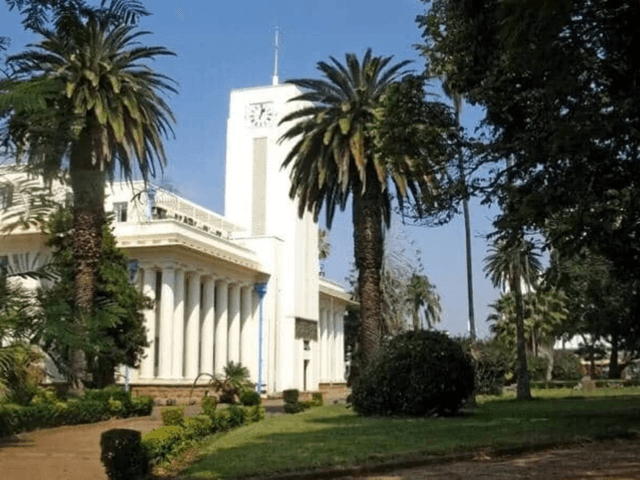


Mutare
Mutare is the capital of Manicaland Province and the largest city in eastern Zimbabwe. Located in the Eastern Highlands, Mutare offers stunning landscapes and a cooler climate, attracting visitors seeking natural beauty and outdoor activities.



Accomodation
Guest houses
Zimbabwe offers a range of guest houses catering to various preferences and budgets. In Harare, options like The N1 Hotel & Campsite provide affordable stays, while Palm Villa Guest House offers a more tranquil and homely atmosphere. For a more intimate experience near Victoria Falls, Monomotapa Village Guest House is a great choice, and Gweru Guest House serves those passing through the Midlands. The Vumba View Guest House in Mutare provides stunning views of the Eastern Highlands, perfect for nature lovers, while Shamwari Guest House in Bulawayo offers a peaceful retreat close to attractions like Hwange National Park. Each location promises unique experiences in the heart of Zimbabwe's diverse landscapes.




Hotels and resorts
Zimbabwe offers a variety of hotels and resorts catering to different tastes and budgets. The Victoria Falls Hotel, a luxurious colonial-era icon, provides stunning views of the falls, while The Kingdom Hotel offers a more family-friendly atmosphere near the falls. In the capital, Meikles Hotel stands out for its prestige and central location, ideal for business travelers. Great Zimbabwe Hotel in Masvingo offers a blend of comfort and historical charm, perfect for exploring the Great Zimbabwe Ruins. For a serene retreat, Bumi Hills Safari Lodge on Lake Kariba provides breathtaking views and wildlife safaris, while Antelope Park in Gweru combines luxury with unique wildlife experiences like walking with lions and game drives. Each location offers a distinct experience, from luxury stays to adventurous getaways.

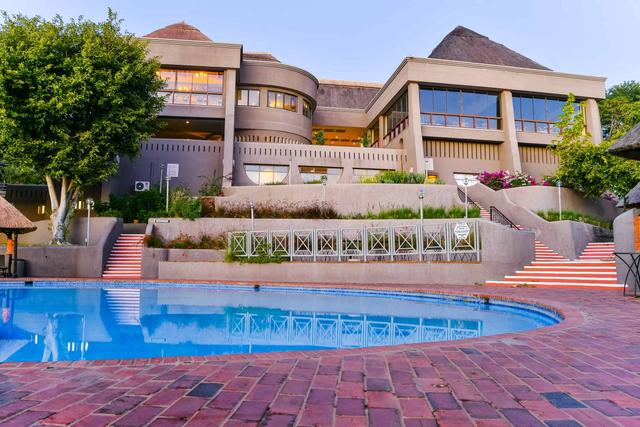
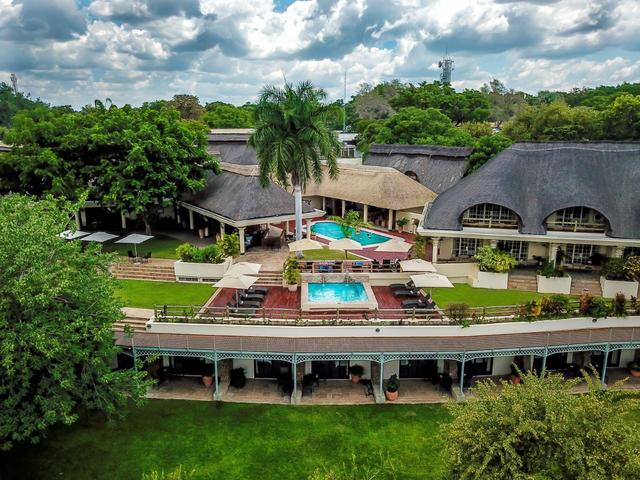

Campings
Zimbabwe offers a variety of camping options, from campsites within national parks to private game reserves and lodges with camping facilities. Popular destinations include Hwange National Park, Mana Pools National Park, Matobo National Park, and Victoria Falls. Visitors can find everything from basic campsites to more luxurious options with amenities like swimming pools and dining facilities.
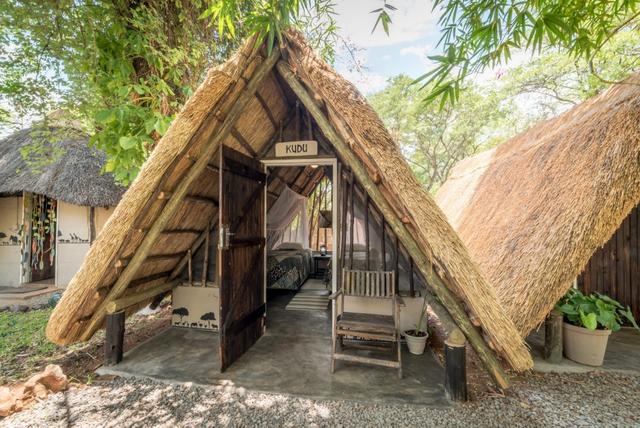
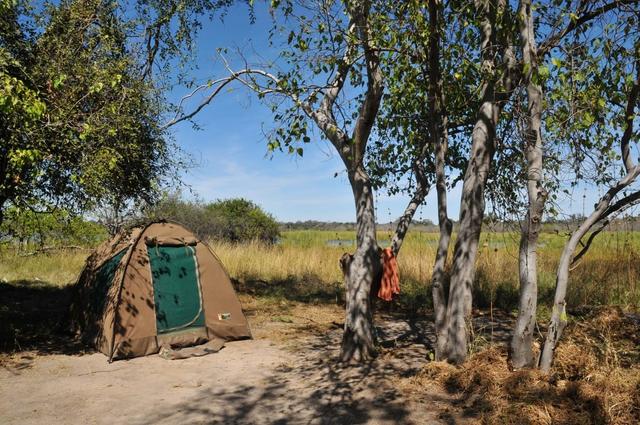
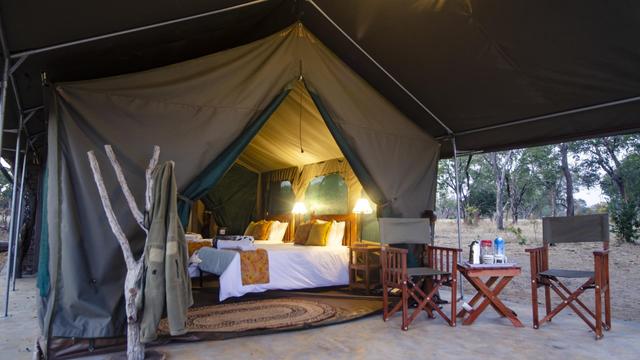

Requirements for Visa
Documents to be submitted for your application
- Completed Visa Application Form
- Valid Passport
- Passport-Sized Photographs
- Flight Itinerary
- Proof of Accommodation
- Proof of Sufficient Funds
- Travel Insurance
- Yellow Fever Vaccination Certificate
- Visa Fee Payment Receipt
- Invitation Letter (if applicable)
At the time of visa issuance, please provide the following documents
- Completed Visa Application Form
- Valid Passport
- Passport-Sized Photographs
- Proof of Travel Arrangements
- Proof of Accommodation
- Financial Proof
- Yellow Fever Vaccination Certificate
- Visa Fee Payment Receipt
- Travel Insurance
- Letter of Invitation (if applicable)
Useful links
- Zimbabwean Embassy Website
- Zimbabwe Immigration Department
- Zimbabwe Tourism Authority
- International Travel Health Information
- Visa Processing Services
Economy of Zimbabwe
Agriculture, forestry, and fishing
Zimbabwe’s agricultural sector is a cornerstone of the national economy, contributing 12–18% to GDP and supporting the livelihoods of about 70% of the population, particularly in rural areas. It plays a vital role in industrial development by supplying around 63% of raw materials to the manufacturing sector and generating roughly 30% of export earnings. The sector is diverse, covering crop production—such as maize, tobacco, soyabean, and horticultural crops—alongside livestock and fisheries. However, agriculture in Zimbabwe is heavily dependent on rainfall, making it vulnerable to climate variability, including droughts and floods that disproportionately affect rural communities.
The land reform program has reshaped land ownership, impacting production systems and infrastructure. While government support through subsidies and crop promotion initiatives aims to stabilize the sector, challenges such as climate change, limited infrastructure, and restricted access to finance persist. Despite these hurdles, with strategic investments and sound policies, Zimbabwe’s agricultural sector holds strong potential for revitalization and could play a key role in enhancing regional food security.
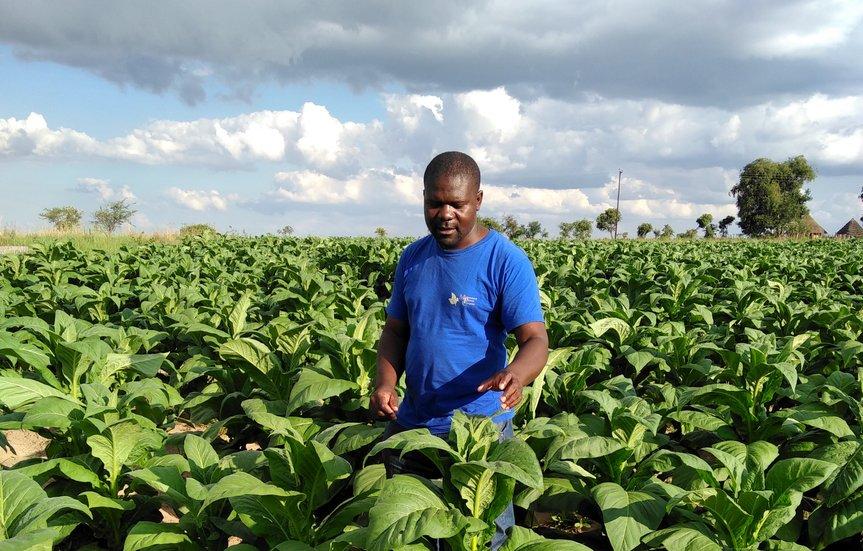
Resources and Power
Zimbabwe is endowed with abundant natural resources, including vast mineral deposits such as platinum group metals, chrome, gold, lithium, and diamonds—particularly from the Marange fields. The country holds the world’s second-largest platinum reserves and high-grade chromium ore, making mining a key driver of export earnings. Fertile agricultural land supports major cash crops like tobacco, cotton, and horticulture, while maize remains essential for food security. Additionally, Zimbabwe possesses significant coal reserves and untapped coal-bed methane gas potential, offering opportunities for energy development.
Despite these resources, Zimbabwe faces considerable energy challenges. The country’s installed power generation capacity is around 2,800MW—far below the estimated 5,000MW required—leading to periodic blackouts. A mix of coal, hydro, and solar energy is used, but shortfalls persist, requiring electricity imports from Zambia and Mozambique. The economy is heavily reliant on mining and agriculture, with gold and tobacco as key exports. However, a large informal sector, valued at $44 billion in PPP terms and representing over 64% of the economy, reflects underlying structural issues. Zimbabwe also struggles with a persistent trade deficit due to high import costs for fuel, machinery, and cereals.
Manufacturing
Zimbabwe’s manufacturing sector, once a regional leader, has experienced significant decline over the past two decades due to economic instability, hyperinflation, foreign currency shortages, and inconsistent policy frameworks. Despite these setbacks, the sector remains diverse and closely linked to agriculture, mining, and commerce. Key sub-sectors include food and beverages, textiles, chemicals, leather, wood products, and metal fabrication. While past de-industrialization has reduced capacity utilization, the foundation still exists for revitalization, particularly in value-added industries like textile production, meat processing, and vehicle assembly.
To realize its potential, the sector requires targeted investments in retooling, modernization, and infrastructure. Strategic partnerships and joint ventures with entities under the Industrial Development Corporation or private firms present opportunities for both local and foreign investors. A robust industrial policy, improved electricity supply, and reduced bureaucratic barriers are essential to stimulate manufacturing growth. With the right policy support and focus on export-oriented production, Zimbabwe’s manufacturing industry can once again become a key driver of economic growth and foreign currency generation.
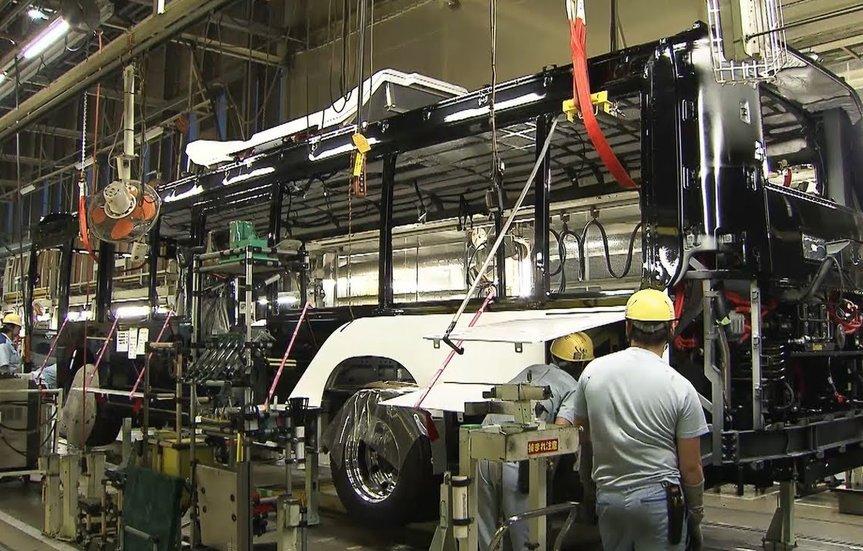
Finance
Zimbabwe’s economy is heavily dependent on agriculture and mining, with exports dominated by gold, tobacco, and ferroalloys, alongside cotton, sugar, and other mineral products. South Africa, China, and several African countries are Zimbabwe’s main trading partners. On the import side, the country relies on fuels, machinery, transport equipment, and food products. As a member of regional economic blocs like SADC and COMESA, Zimbabwe benefits from trade integration efforts, though its export base remains relatively narrow and vulnerable to global price fluctuations.
However, persistent economic challenges hinder trade and financial stability. Foreign exchange shortages, high inflation, and macroeconomic instability continue to affect the country’s trade balance and overall economic resilience. The financial sector is strained by limited access to foreign currency and reduced lending capacity, which constrains investment and business growth. Additionally, Zimbabwe has a substantial informal economy, which, while providing livelihoods for many, operates largely outside the formal financial and regulatory systems, limiting its contribution to tax revenues and economic planning.
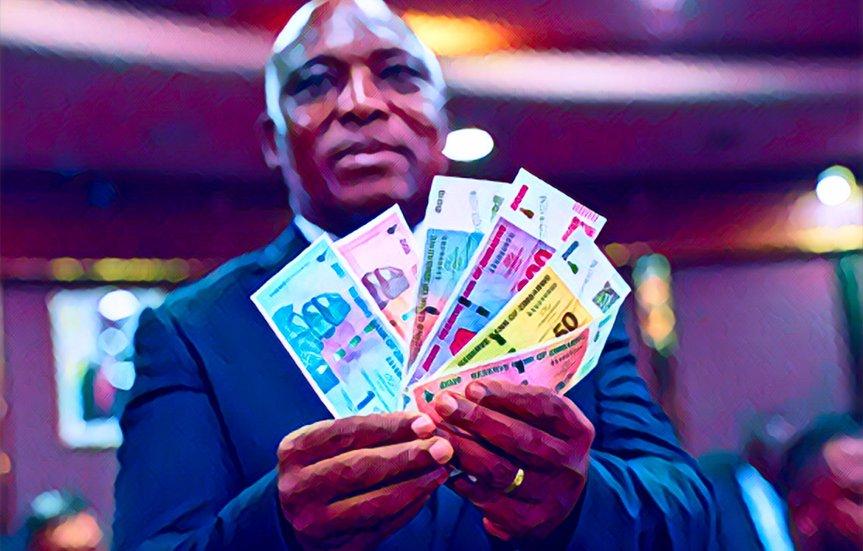
Trade
Zimbabwe’s trade is largely driven by its rich natural resources, with key exports including minerals like gold, platinum, diamonds, and chrome, as well as agricultural products such as tobacco, cotton, and maize. The country imports machinery, chemicals, petroleum products, and foodstuffs, primarily from trade partners like South Africa, China, the United Arab Emirates, and the European Union. Zimbabwe is also part of regional trade agreements such as the Southern African Development Community (SADC), COMESA, and the African Continental Free Trade Area (AfCFTA), which aim to foster economic cooperation. Despite challenges like inflation and sanctions, Zimbabwe continues to rely on its mining and agricultural sectors to drive trade and foreign exchange earnings.
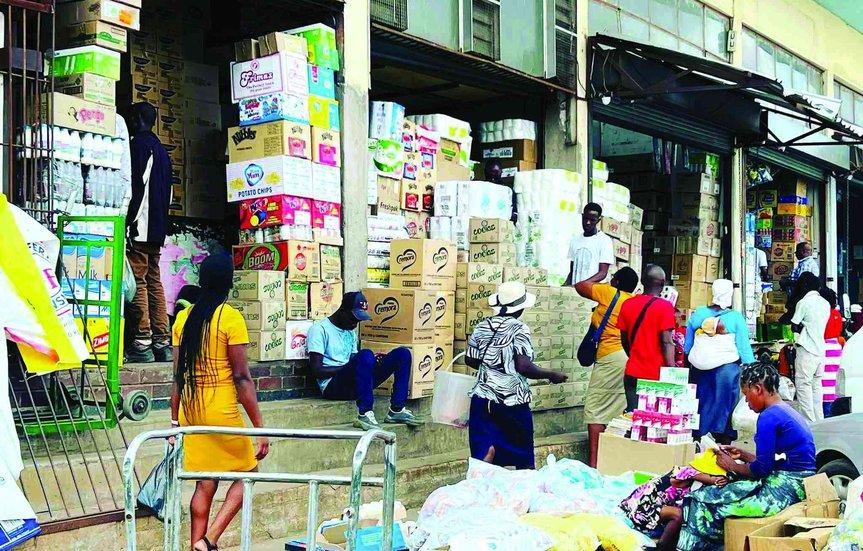
Labour and taxation
Zimbabwe’s labor market is characterized by a high level of informality, with the informal sector employing a large portion of the population due to limited formal job opportunities. Unemployment and underemployment remain significant challenges, especially among the youth. The formal workforce is governed by labor laws that cover wages, working conditions, and dispute resolution, although enforcement can be inconsistent.
The country operates a multi-tier tax system that includes corporate income tax, personal income tax (PAYE), value-added tax (VAT), and customs duties. The Zimbabwe Revenue Authority (ZIMRA) is responsible for tax collection. While tax rates are relatively high by regional standards, revenue collection is hampered by widespread informality and tax evasion. The government has introduced measures to broaden the tax base and improve compliance, but challenges remain in balancing revenue generation with economic growth and investor confidence.
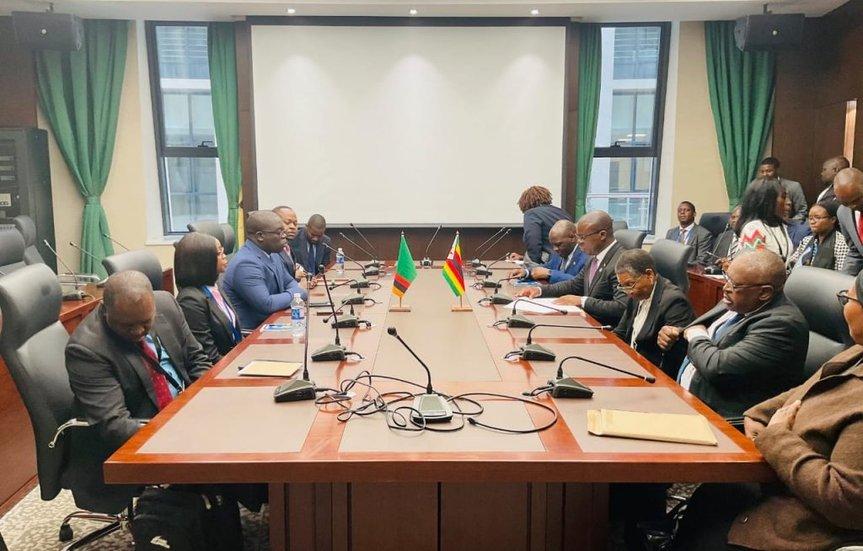
Transportation and telecommunications
Zimbabwe’s transportation system relies heavily on its road and rail networks, with air travel playing a key role in tourism and international connectivity. The road network is relatively extensive, consisting of primary, secondary, and tertiary roads. Primary roads, including parts of the Pan-African Highway, are critical for moving domestic and international freight. However, road conditions have deteriorated over the years, affecting trade and tourism. Rail transport mainly serves freight needs and connects Zimbabwe to neighboring countries, while air transport is vital for tourism, with major airports in Harare and Victoria Falls supporting domestic and international flights.
Public transportation includes buses, commuter omnibuses (kombis), and taxis, offering affordable options for many but often facing issues such as overcrowding, poor vehicle maintenance, and traffic violations. Inter-city travel can be particularly unreliable and unsafe due to driver fatigue and speeding. Fuel shortages, power outages, and deteriorating infrastructure further strain the system. In response, the government is investing in infrastructure upgrades and promoting the modernization of public transport, including new routes, more efficient vehicles, and increased use of technology to improve service delivery and safety. Zimbabwe has three licensed Global System for Mobile communication (GSM) network operators; Econet Wireless, Net-One and Telecel. Econet Wireless Zimbabwe is Zimbabwe's largest provider of telecommunications services with the largest subscriber base of over 60%, followed by Net-One and Telecel.
Latest News in Zimbabwe
Politics
The first president of independent Namibia, Sam Nujoma, has died at the age of 95 in the capital Windhoek, the country's current leader has announced.
Politics
Ugandan President Yoweri Museveni has officially announced his intention to seek re-election in the 2026 presidential race, extending his nearly four-decade rule. Museveni, who has been in power since 1986, is once again positioning himself as the steady hand guiding Uganda through challenges. His decision has sparked mixed reactions, with supporters praising his leadership and longevity, while critics call for fresh leadership and political reform. As the nation looks ahead to the 2026 elections, Uganda braces for a heated political contest.
Politics
Peace Agreement with DRC Rwanda and the Democratic Republic of Congo (DRC) signed a U.S.-brokered peace deal aimed at ending conflict and promoting regional trade. Rwanda agreed to stop supporting armed groups like M23 rebels, though it denies involvement. Tensions remain, and President Kagame is cautious about whether the peace will last.
Wildlife
Tanzania has announced that all foreign tourists visiting Mainland Tanzania will be required to purchase a mandatory travel insurance policy upon arrival, beginning January 2026. The new regulation, issued by the Ministry of Finance on July 4, 2025, is part of the government reforms in the country’s 2025/26 financial year agenda. According to the notice, the measure will apply to all non-citizens, with the exception of visitors from countries that are part of the East African Community (EAC) and the Southern African Development Community (SADC). Citizens from these regions will continue to be exempt from the requirement.
Environment
In light of the growing food insecurity crisis across many African nations, heads of state and agriculture experts gathered in Nairobi, Kenya, this week to discuss solutions to address food shortages, especially in regions severely affected by climate change, political instability, and economic challenges. The two-day summit, titled “Agriculture and Climate Resilience: A Pan-African Strategy”, brought together government officials, NGOs, scientists, and international organizations to create a comprehensive strategy to improve agriculture, nutrition, and sustainable food systems across the continent.
Tech & Science
In 2025, Artificial Intelligence (AI) isn’t just a futuristic buzzword - it’s the secret weapon behind some of the world’s most successful content creators. From bloggers and YouTubers to podcasters and marketers, AI-powered tools are changing the way we brainstorm, write, design, and edit. If you've ever struggled with writer’s block, lacked design skills, or wished for faster content creation - AI might be your best assistant yet. Here’s how AI is revolutionizing the creative industry and how you can use it to boost your projects.
